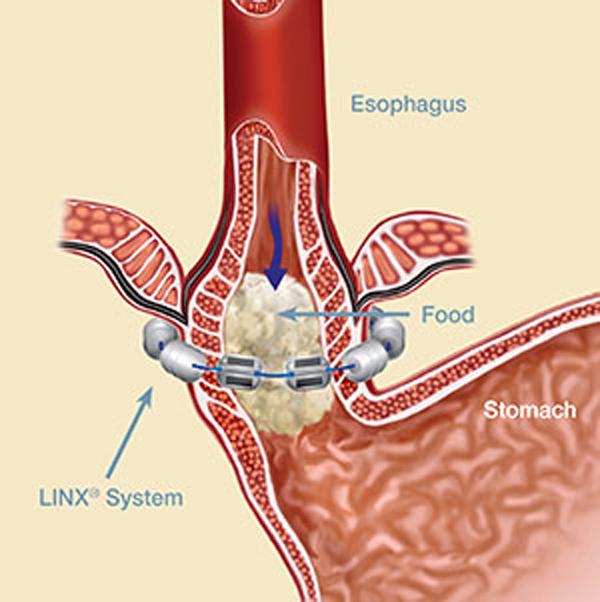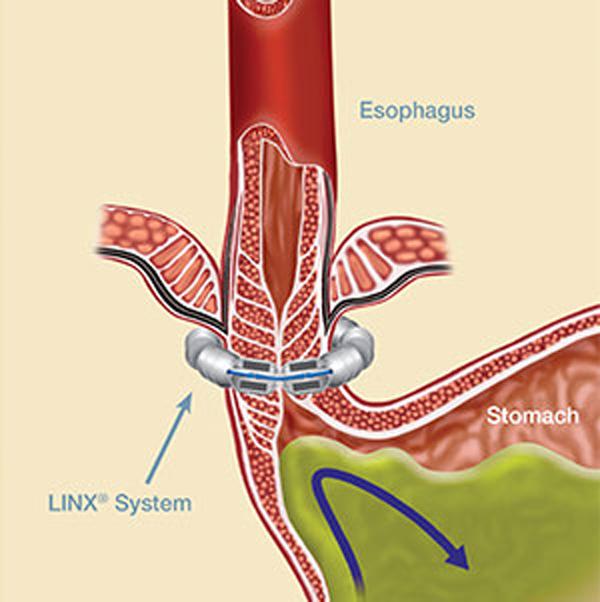The LINX® System augments the weak Lower Esophageal Sphincter (LES) to help prevent reflux.
The LINX® System is a small, flexible band of magnets enclosed in titanium beads. The beads are connected by titanium wires. The magnetic attraction between the beads helps keep the weak LES closed to prevent reflux. Swallowing forces temporarily break the magnetic bond, allowing food and liquid to pass into the stomach. Magnetic attraction closes the LES after swallowing, to reinforce the body's natural barrier to reflux.
Gastroesophageal reflux disease (GERD) is a chronic, often progressive disease caused by a weak lower esophageal sphincter (LES) that allows acid and bile to reflux, or flow back, from the stomach into the esophagus.
The LES is a muscle at the junction of the esophagus and stomach that functions as the body’s natural barrier to reflux. The LES acts like a valve, allowing food and liquid to pass through to the stomach. Normally, the LES resists opening to gastric pressures to prevent reflux (see Figure 1). In people with GERD, the LES is weak and allows acid and bile to reflux from the stomach into the esophagus, often causing injury to the lining of the esophagus and symptoms such as heartburn, chest pain, regurgitation, sore throat, and cough.
How Is the LINX® System Implanted?
The LINX® System is placed around the esophagus just above the stomach using a surgical technique called laparoscopy. Patients are placed under general anesthesia during the procedure. Once implanted, the device will begin working immediately.
 Credit
Credit
Recovery
Most patients who undergo LINX® placement can go home from the hospital the same day, while some stay one night in the hospital. Once you are awake after surgery, you can begin to eat a regular diet. For the first month after surgery, you should eat one to two bites of solid food every hour while you are awake. This can be a few crackers or a small snack. Eating solid foods frequently after surgery can help stretch the device and ensure that your LINX® device is working properly.
Recovery from surgery usually takes four to six weeks, but many patients feel better very quickly after surgery and can even return to work in one to two weeks.
You should stay active after surgery – walking starts on day one after surgery. You should gradually increase your activity level back to your baseline. Your surgeon might instruct you to limit how much weight you lift, but a general rule during recovery is do not do anything that causes you pain.
If you have any questions or concerns about your recovery, you should speak with your surgeon as soon as possible to prevent complications.










